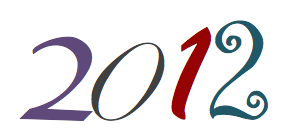 “I volunteer!” she screams as she pushes her way to the front. “I volunteer as tribute!” The shocked crowd gasps as all eyes turn to Katniss Everdeen.
“I volunteer!” she screams as she pushes her way to the front. “I volunteer as tribute!” The shocked crowd gasps as all eyes turn to Katniss Everdeen.
If you haven’t read the Hunger Games series or have yet to see the movie, just watch the trailer and you’ll no longer be living under a rock.
Katniss’ offer to volunteer in her sister’s place at the annual Hunger Games slaughtering—I mean, competition—is the ultimate sacrifice. And thank goodness most of us won’t ever find ourselves in that position! But a little bit of sacrifice is exactly what we should give when we volunteer.
I went to a charity event last month and was blown away by the activities and mission of this organization. It made me think about the people involved and what it takes to run such a successful program—then something happened. I wanted to join them. I wanted to make a difference.
“But I’m so busy with my job, going to the gym, keeping up with friends and spending time with my husband and dogs. I don’t even have kids, yet, and I struggle to find the time to fit everything in!” Insert your own personal activities and family members and my internal dialogue would probably match yours at one point or another; long story short, it’s hard. But that’s just it—volunteering should be a little hard. It takes some sacrifice, and you have to MAKE time to do it.
I took the plunge and offered to donate my PR expertise and time to this awesome nonprofit. This won’t be easy, and I’m already stuffed to the gills at the office with regular, billable work, but it’s important and I’m glad to do it. I’m so thankful that I have a really understanding and flexible team here at Ketner Group, and they’re also glad that I’m volunteering. We all want to at some point, it’s just finding that time. Or maybe the right organization that calls out to you like none did before.
I hope to talk more about my volunteering work, maybe more about the nonprofit when things start progressing. So stay tuned! And let me know about your volunteering adventures!


 Let’s face it, there are some days where we just don’t want to get up and go to work – you are lying if you say otherwise. Other than those few days a year, I will say that I genuinely enjoy coming to work at our funky little offices. Why? I love the people that I work with! We are like a family here. We look out for each other, and support each other at and outside the office. In fact, compared with the company culture at other small businesses (and corporate organizations) we almost live in a protective bubble.
Let’s face it, there are some days where we just don’t want to get up and go to work – you are lying if you say otherwise. Other than those few days a year, I will say that I genuinely enjoy coming to work at our funky little offices. Why? I love the people that I work with! We are like a family here. We look out for each other, and support each other at and outside the office. In fact, compared with the company culture at other small businesses (and corporate organizations) we almost live in a protective bubble.
 Has the press release run its course as a valuable communications tool, or, to paraphrase Mark Twain, have rumors of its death been greatly exaggerated? A few of us share our opinions on why—or why the press release isn’t—dead.
Has the press release run its course as a valuable communications tool, or, to paraphrase Mark Twain, have rumors of its death been greatly exaggerated? A few of us share our opinions on why—or why the press release isn’t—dead.
 Daily agency life often feels like an elaborate juggling act—account managers constantly juggle accounts and each account’s unique priorities and deadlines. This requires switching gears throughout the day, usually several times an hour. The necessity of this workflow is obvious—we need to be available to our clients throughout the day as projects and issues pop up, and we strive to efficiently handle projects as if each account were our only account. The KG team prides ourselves on being flexible and in our ability to nimbly manage dozens of loose ends at a time. However, it would not be a stretch to call this style of work ‘multi-tasking,’ and from
Daily agency life often feels like an elaborate juggling act—account managers constantly juggle accounts and each account’s unique priorities and deadlines. This requires switching gears throughout the day, usually several times an hour. The necessity of this workflow is obvious—we need to be available to our clients throughout the day as projects and issues pop up, and we strive to efficiently handle projects as if each account were our only account. The KG team prides ourselves on being flexible and in our ability to nimbly manage dozens of loose ends at a time. However, it would not be a stretch to call this style of work ‘multi-tasking,’ and from  It’s our favorite time of the year—and I’m not talking about the Holidays. December is the month where our clients start thinking about goals for their 2012 public relations programs. In addition to new technology and industry standards, every year brings growth and change to a business, so re-evaluating one’s PR program is a must. Here’s a look at five of the most important questions companies should ask themselves and their PR agency when planning a new PR strategy for 2012.
It’s our favorite time of the year—and I’m not talking about the Holidays. December is the month where our clients start thinking about goals for their 2012 public relations programs. In addition to new technology and industry standards, every year brings growth and change to a business, so re-evaluating one’s PR program is a must. Here’s a look at five of the most important questions companies should ask themselves and their PR agency when planning a new PR strategy for 2012.